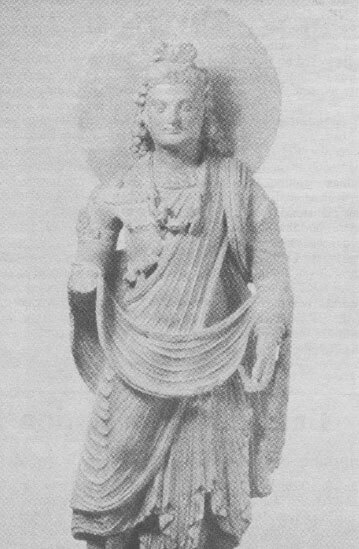| The following article is from the Spring, 1994 issue of the Snow Lion Newsletter and is for historical reference only. You can see this in context of the original newsletter here. |

The Metropolitan Museum of Art in New York City will inaugurate in April its first permanent galleries dedicated to the display of the arts of South and Southeast Asia. In a series of 18 newly constructed rooms housing some 1300 works of art from more than a dozen countries, this landmark installation will for the first time in the history of the Metropolitan offer a wide-ranging survey of the arts produced in the vast region extending from ancient India to Indonesia, and including Afghanistan, Pakistan, Nepal, Tibet, Burma, Thailand, Vietnam, and Cambodia. The worksmost of which have not been displayed beforerange in date from the third millennium B.C.E. to the early 19th century, and are drawn from one of the finest and most comprehensive collections in the world.
The installation is being made possible by Florence and Herbert Irving, for whom the galleries are named.
Philippe de Montebello, Director of the Metropolitan Museum, stated: As we approach the Museum's 125th anniversary in 1995, we celebrate a major milestone toward our goal of placing all of our extensive holdings on viewpart of the Museum's program of building from within. With the creation of this much-need and grand setting for these important collections, the Metropolitan's holdings of South and Southeast Asian art will now assume pride of place alongside other major world cultures. The arts of South and Southeast Asia are primarily works of sculpture, and in their beauty, skill, and refinement they rank with the best of any civilization. It is one of the Metropolitan's great virtues that under one roof visitors can pass from one continent to another and discover how the shared aspiration for excellence can take such different forms in a universal museum.
The new Florence and Herbert Irving Galleries for the Arts of South and Southeast Asia are being constructed on the second floor of the Museum, extending about two city blocks from, the Great Hall to the northern end of the building and comprising some 12,500 square feet.
The $10-million reconstruction project has been seven years in the making. Most of the galleries are distinctive in size, volume, coloration, and architectural detailing in order to place the art in context and to lend to the visitor a sense of traveling through time and space from India to Cambodiafrom inner sanctums to open air courts, said Steven M. Kossak, Assistant Curator, Department of Asian Art, and Manager and Coordinator of the project.

